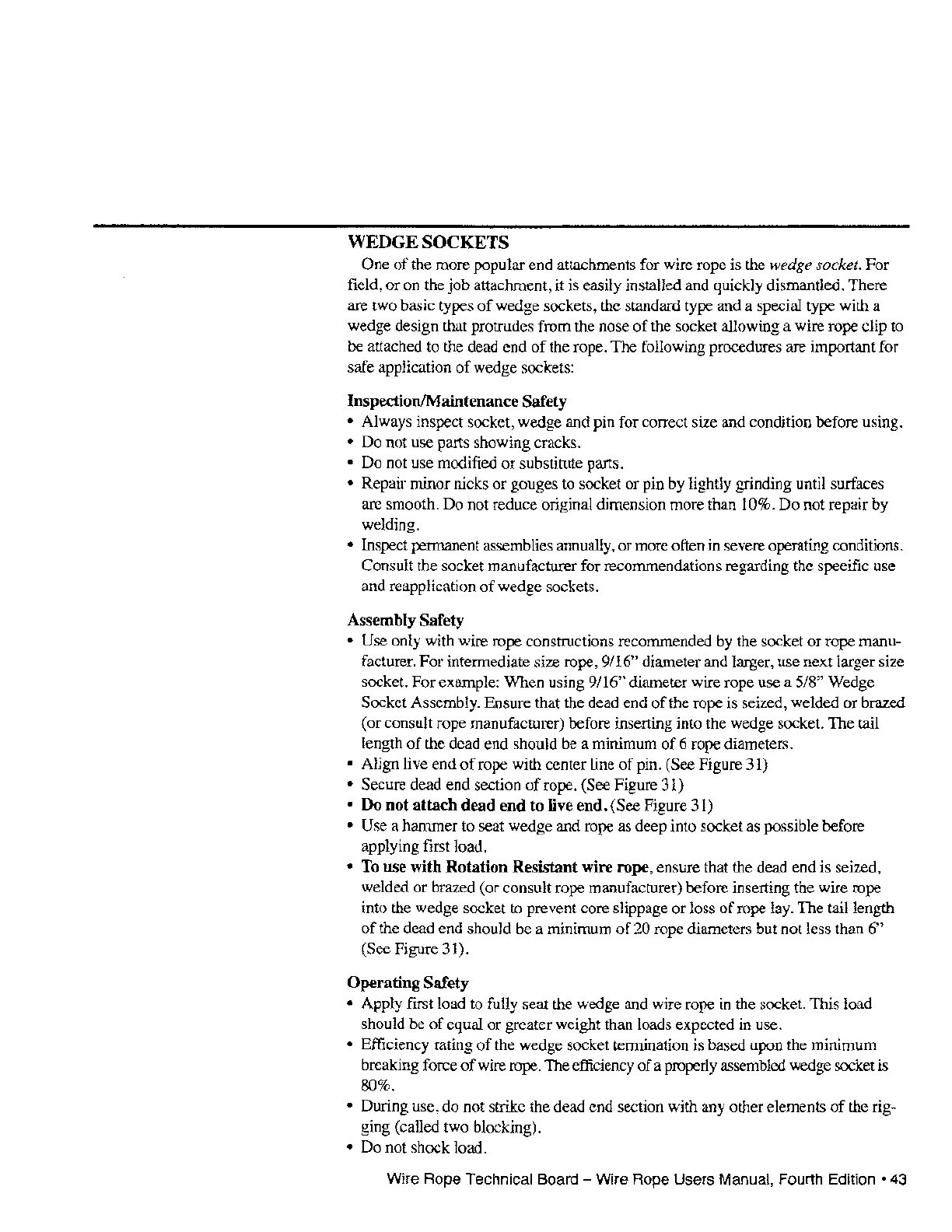WEDGE SOCKETS
One of the more popular end attachments for wire rope
is
the wedge socket. For
field, or on the job attachment, it is easily installed and quickly dismantled. There
are two basic types of wedge sockets,
the
standard type and a special type with a
wedge design that protrudes from the nose of
the
socket allowing a wire rope clip to
be attached
to
the dead end
of
the rope. The following procedures
are
important for
safe application of wedge sockets:
Inspection/Maintenance Safety
• Always inspect socket, wedge and pin for correct size and condition before using.
• Do not use parts showing cracks.
• Do not use modified or substitute parts.
• Repair minor nicks or gouges to socket or pin
by
lightly grinding until surfaces
are smooth. Do not reduce original dimension more than
10%.
Do not repair by
welding.
• Inspect permanent assemblies annually, or
more
often
in
severe operating conditions.
Consult the socket manufacturer for recommendations regarding the specific use
and reapplication of wedge sockets.
Assembly Safety
• Use only with wire rope constructions recommended by the socket or rope manu-
facturer. For intermediate size rope,
9/16" diameter and larger, use next larger size
socket. For example: When using
9/16" diameter wire rope use a 5/8" Wedge
Socket Assembly. Ensure that the dead end of the rope
is
seized, welded or brazed
(or consult rope manufacturer) before inserting into the wedge socket. The tail
length of the dead end should be a minimum of 6 rope diameters.
• Align live end
of
rope with center line
of
pin. (See Figure 31)
• Secure dead end section
of
rope. (See Figure 31)
• Do not attach dead end
to
live end. (See Figure 31)
• Use a hammer
to
seat wedge and rope
as
deep into socket
as
possible before
applying first load.
•
To
use with Rotation Resistant wire rope, ensure that the dead end is seized,
welded or brazed (or consult rope manufacturer) before inserting the wire rope
into
the
wedge socket
to
prevent core slippage or loss of rope
lay.
The tail length
of
the dead end should be a minimum
of
20 rope diameters but not less than 6"
(See Figure 31).
Operating Safety
• Apply first load to fully seat the wedge and wire rope in the socket. This load
should be of equal or greater weight than loads expected in use.
• Efficiency rating
of
the wedge socket termination
is
based upon the minimum
breaking force of
wire
rope.
The
efficiency
of a
properly
assembled
wedge
socket
is
80%.
• During use, do not strike the dead end section with any other elements
of
the
rig-
ging (called two blocking).
• Do not shock load.
Wire Rope Technical Board - Wire Rope Users Manual, Fourth
Edition·
43
